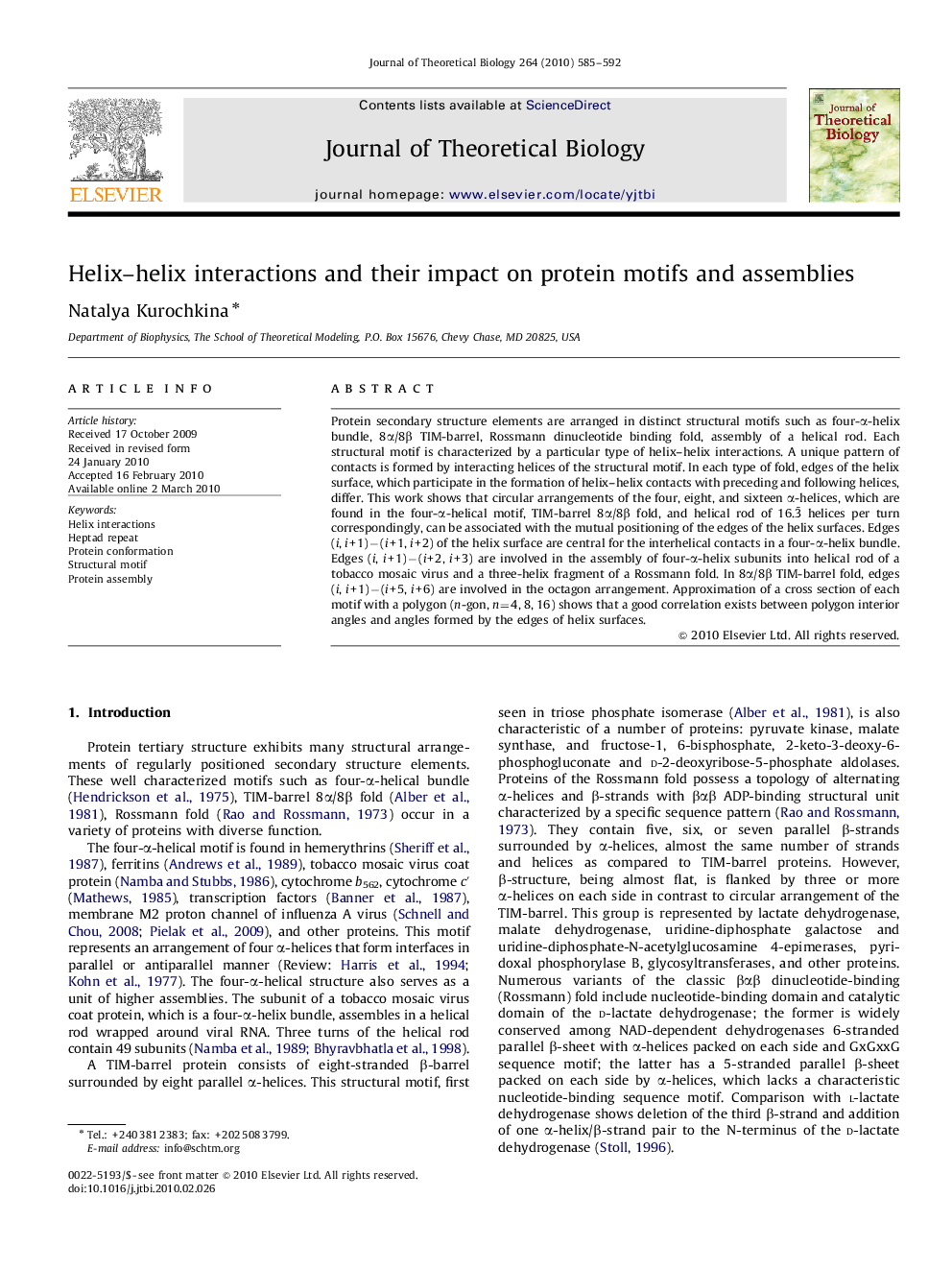| کد مقاله | کد نشریه | سال انتشار | مقاله انگلیسی | نسخه تمام متن |
|---|---|---|---|---|
| 4497663 | 1318945 | 2010 | 8 صفحه PDF | دانلود رایگان |

Protein secondary structure elements are arranged in distinct structural motifs such as four-α-helix bundle, 8α/8β TIM-barrel, Rossmann dinucleotide binding fold, assembly of a helical rod. Each structural motif is characterized by a particular type of helix–helix interactions. A unique pattern of contacts is formed by interacting helices of the structural motif. In each type of fold, edges of the helix surface, which participate in the formation of helix–helix contacts with preceding and following helices, differ. This work shows that circular arrangements of the four, eight, and sixteen α-helices, which are found in the four-α-helical motif, TIM-barrel 8α/8β fold, and helical rod of 16.3¯ helices per turn correspondingly, can be associated with the mutual positioning of the edges of the helix surfaces. Edges (i, i+1)−(i+1, i+2) of the helix surface are central for the interhelical contacts in a four-α-helix bundle. Edges (i, i+1)−(i+2, i+3) are involved in the assembly of four-α-helix subunits into helical rod of a tobacco mosaic virus and a three-helix fragment of a Rossmann fold. In 8α/8β TIM-barrel fold, edges (i, i+1)−(i+5, i+6) are involved in the octagon arrangement. Approximation of a cross section of each motif with a polygon (n-gon, n=4, 8, 16) shows that a good correlation exists between polygon interior angles and angles formed by the edges of helix surfaces.
Journal: Journal of Theoretical Biology - Volume 264, Issue 2, 21 May 2010, Pages 585–592